Two-for-One: Sunglasses and Processing
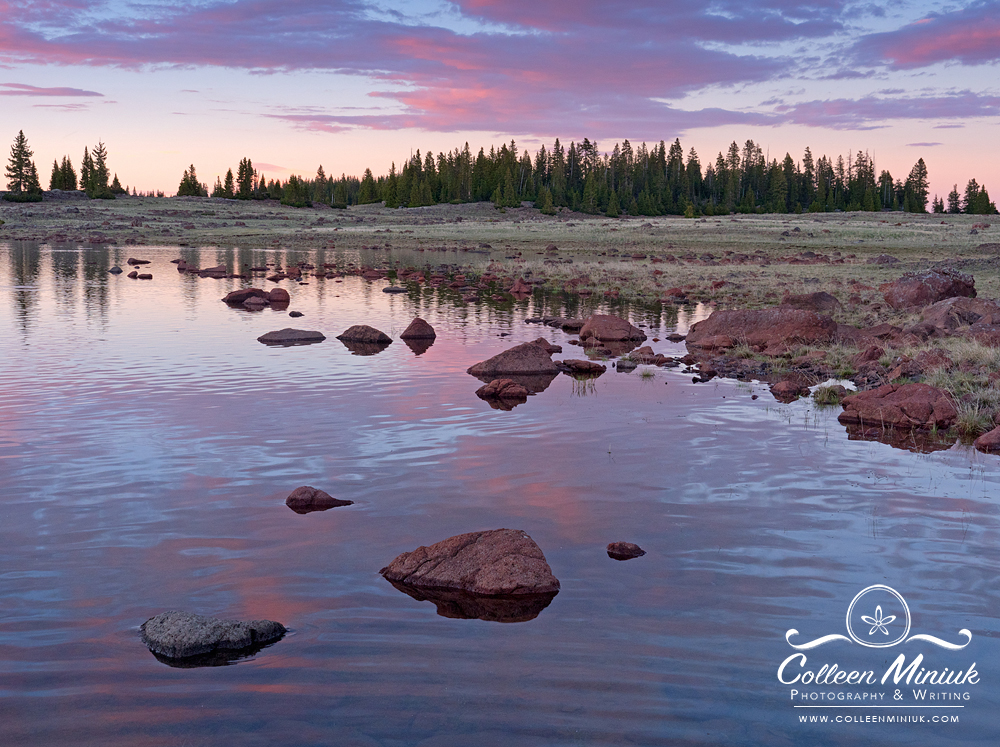
Dear Bubbles:
I almost always wear fairly strong prescription sunglasses (polarized) when I am outside, because I am very sensitive to bright light. I tend to be wearing them whenever I am making photographs. I don’t usually worry about this (except if I want to use a polarizing filter: prescription sunglasses + polarizing filter = no noticeable difference in viewfinder). Other than when I want to use a polarizing filter (which is probably more often than I actually do – see previous sentence), is there any downside to wearing sunglasses when photographing outdoors? (Since I often hear/read that when I process my images I should try to recreate what I saw when I took the picture, should I wear my sunglasses for post-processing?)
~Tom
Dear Tom:
Indeed, most quality sunglasses, prescription or not, incorporate polarized lenses which act similarly to the polarizing filters (also referred to as a “polarizer”) we place on our camera’s lens. Polarization reduces glare from reflective surfaces like water, glass, and metal. Without getting into too much physics, which will melt the two marbles I have left in my little brain, polarizers deflect light traveling in certain directions and prevents that polarized light from entering the lens. Non-polarized light still enters the lens.
In the case of sunglasses, the effect serves to reduce distracting light and increase your ability to see critical details, say, while driving. It also prevents fatigue from constant glare. Beyond these safety-related functions, polarization also helps to increase the clarity and apparent color saturation of the world around us. Whether with sunglasses or a filter on their own, we see a visible—and the most dramatic—impact in the sky when we turn 90-degrees from the sun. (Photographers will note this is side-lighting). At this angle, you can observe the blue coloration transitioning from a lighter, almost pastel, hue to a darker, rich blue color.
Polarization has little to no impact when looking into the sun (which I don’t recommend trying with your own eyes for your protection) or when looking anti-solar, or 180 degrees from the sun. (Photographers will note this is front-lighting and back-lighting, respectively.) In these directions, you’ll observe no change in the coloration of the sky with or without your sunglasses, with or without your polarizing filter.
Polarized sunglasses can be useful in visualizing a scene for photography. If like what you see through your glasses, it’s an indication a polarizer could help you render your scene. Similarly, if you see a polarization effect through your sunglasses, but not through your polarizer, you probably need to give your polarizer a spin (until you can see the sky darken, the reflection in water disappear, glare on leaves vanish, etc.). If need be, lift your sunglasses quickly and temporarily to confirm the filter’s placement. If you are sensitive to bright light, consider draping a dark cloth over your head and camera—as we use with 4×5 large format cameras, for example—when you do this so as to not strain your eyes.
Things get interesting, though, when we start using polarizing objects together. Let’s assume you have a polarizing filter on your lens. Your polarizer repels polarized light away. What comes through your viewfinder then is non-polarized light. Regardless of whether you look through your viewfinder with your unaided eye or sunglasses, there’s no polarized light left (for your sunglasses to polarize). Thus, this is why when you look through your viewfinder with sunglasses, you see no visible change in effect, even when you turn the filter or your head from side to side. Looks can deceive you…
It gets really wild when we use the LCD screen on the back of the camera. Your camera sensor records non-polarized light (which is translated into data) when using a polarizing filter. The LCD screen introduces both polarized and non-polarized light when displaying the image. To see what happens when sunglasses meet LCD, try this: Put your sunglasses on. Turn your camera’s LCD on. Turn the camera into the vertical position. The screen should turn black. You can make your image disappear right in front of your eyes! (By the way, this is a super fun party trick—although, it does make people think their camera is broken for a few seconds. So fair warning…)
Here’s a visual to help sort this process out:
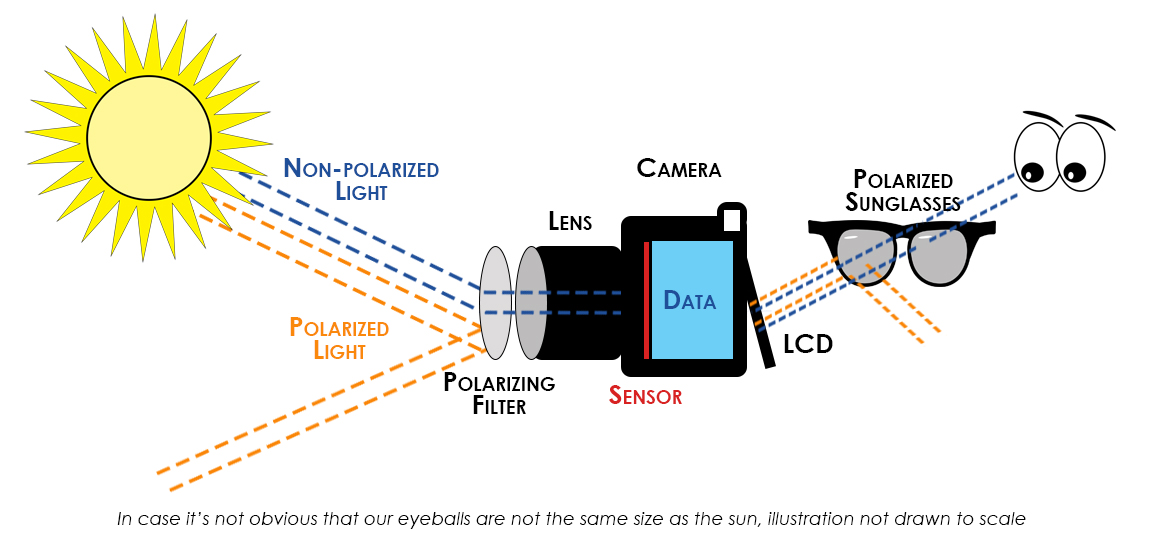
The same thing happens if you tilt your head to the side while wearing sunglasses while looking at your computer monitor, so long as it is based in LCD technology. Try it!
Not many of us are walking around tilting our heads to the side when looking at LCD screens, either on our camera or in processing at home. So wearing sunglasses while photographing, and even processing (hey, knock yourself out!), has minimal effect on our photography. I couldn’t come up with—either on my own or through research—any additional downsides to wearing sunglasses while photographing.
Now, this post was going to be all about sunglasses and polarization until you dropped that last sentence on me…so you’re gonna get a two-for-one deal today on Dear Bubbles! We need to have a heart-to-heart about this notion of “recreating what you saw when you took the picture in post-processing.”
We can make images for many reasons—any reason really, and my reason can differ from your reason and both be right answers. Photographer Minor White suggested different goals depending on what you are trying to accomplish:
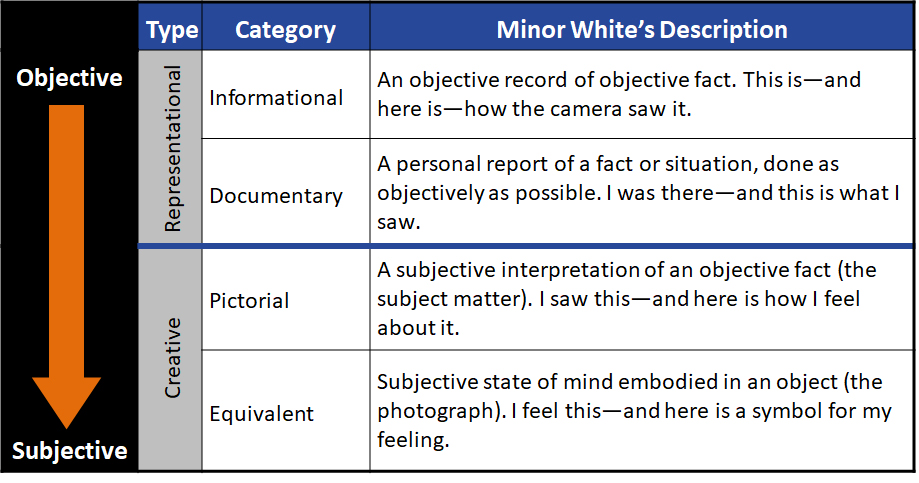
Note that the arrow on the left says “Objective” to “Subjective” and not “Bad” to “Good.” Recreating what you saw using your available photographic tools and skills would fall into the representational category. A good example of this is photojournalism, where we’ve come to associate a certain level of truth and realism to the resulting images.
To reduce the photographic art down to merely recreating what you saw, though, is to limit yourself creatively. My goal as a photographer is not to recreate what any one person could have seen had they been standing with me in a place, but rather to convey my experiences and the meaning of those experiences developed through all of my senses—not just sight. I aim to connect my inner emotions and thoughts and responses with the external world, to use light to help convey dimension and mood, to incorporate human perceptions into my compositional arrangement to help you feel not necessarily what I felt, but something. Something deeper than just “I was here and this is what I saw.” With or without sunglasses!
Before I even take my camera out of my bag, I ask myself “To what am I responding?” Then I visualize what I wish to create photographically. Visualization, according to Merriam-Webster, is “the act or process of interpreting in visual terms or in putting into visible form.” It is the second step of the Wallas Model of Creativity: incubation (which I discussed in my earlier Keeping it Fresh post). To do this, I blend personal meaning, visual elements, and the use of my photographic toolbox to create a vision of what I wish to express.
I aim to make the best image I can out of my camera in the field. At that point, my image is nothing but a bunch of bits. Just data. (I shoot in RAW format.) It’s not a fully executed result. My vision doesn’t become a reality until I work it through the digital darkroom. (One could argue that our vision isn’t truly fully realized until we present it in display form, either in print or digitally—that’s a philosophical discussion for a different time.)
Post-processing is not the same as processing. Processing is what you do with your digital images after you’ve recorded data in your camera. Post-processing is what you do after you process images like taking a nap, going for a walk, or drinking wine.
Processing software offers us a fresh set of tools to help us reevaluate our earlier decisions and enable the delivery our final vision—which may change over time and through this process. Minor White encouraged the practice of “post-visualization,” which meant “When printing a negative, remembering back to the plan for the photograph. Or when projecting forward to new combinations.”
(Since I made a point about terminology earlier: post-visualization is what occurs after visualization. Pre-visualization is not the same as visualization. Pre-visualization is the first step in Wallas Model of Creativity, or preparation. It encompasses everything you do and feed your brain before you starting imaging an image, which could include taking a nap, going for a walk, or drinking wine.)
When I process my image, I care not what the scene literally looked like—and I certainly feel no obligation to render it literally in my final photograph. Instead, I think back to the meaning and emotion I held when I made the frame. I’ll increase the blue tones to make you feel cold. I’ll straighten a slightly crooked line to make you feel strength and stability. I’ll lighten an area and darken the background behind it so the brighter spots grab your attention first.
Even if I wanted to recreate exactly what I observed, I’d fail. I can hardly remember where I put my reading glasses let alone remember every nuance of a scene to faithfully reconstruct it at home days, weeks, months, even years later. I’d miss so many details. Our brains simply can’t take that much information in, and when it does, we see it through our own lens of perceptions, anyhow. What does the scene actually look like when all of us look at it differently?
So Tom, rather than “recreate what you saw when you took the picture in post-processing,” aim for a more achievable, and I’d argue a more enjoyable, approach: express what moved you to make the image using all the tools available to you. Your camera. Processing software. Even your sunglasses.
Be well, be wild,
~Bubbles
Have a question about photography, art, and/or the creative life? Need some advice? Send your question to Dear Bubbles at colleen@colleenminiuk.com to be possibly featured in a future column post. (If you’d prefer a different display name than your real first name, please include your preferred nickname in your note.)


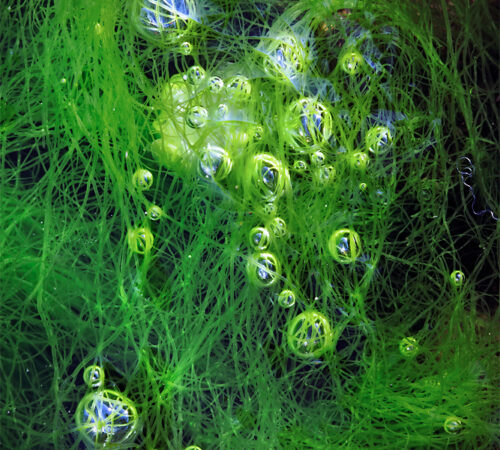
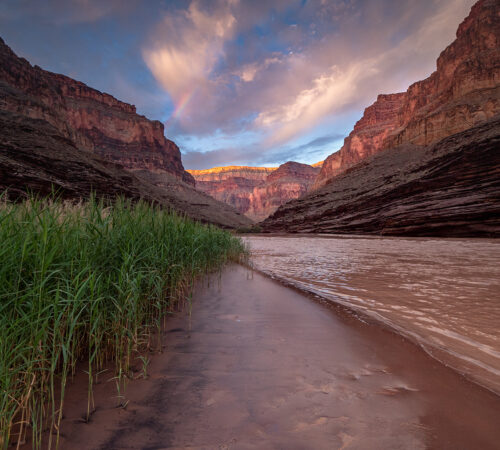

2 Comments
Tom Phelps
Bubbles,
Thank you for your reasoned and well thought out response. I have struggled with the sunglasses/polarizer problem for a few years, and your response is the most revealing one I have ever seen! Kudos!
And thank you for your response to my “throw away” comment at the end. It was mostly meant tongue-in-cheek, but your gently but firmly taking me to task for the underlying assumption was very well put! I am gradually coming to terms with “processing” images so that they convey what I want them to be rather than simply being a “technically correct” representation of what my camera recorded. I constantly struggle with myself to let my inner artist out, and you reminded all of us that this should be a goal, not a struggle.
Tom
Bubbles
Glad to hear, Tom! Thanks for sending such a great question in!